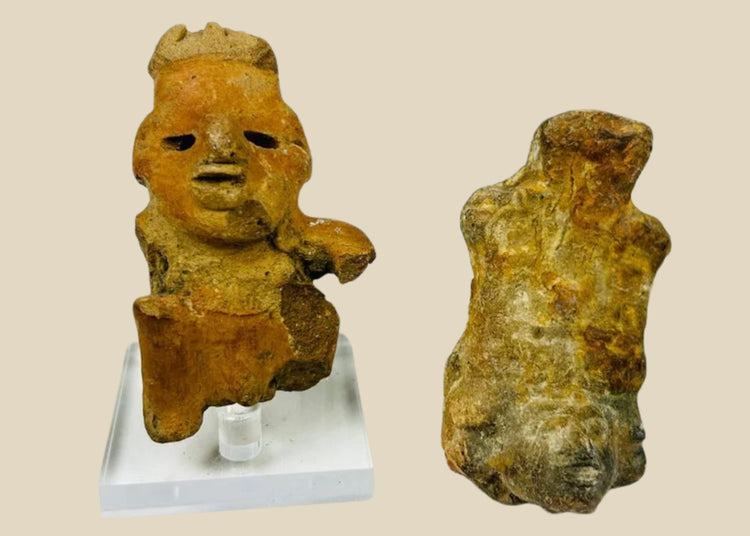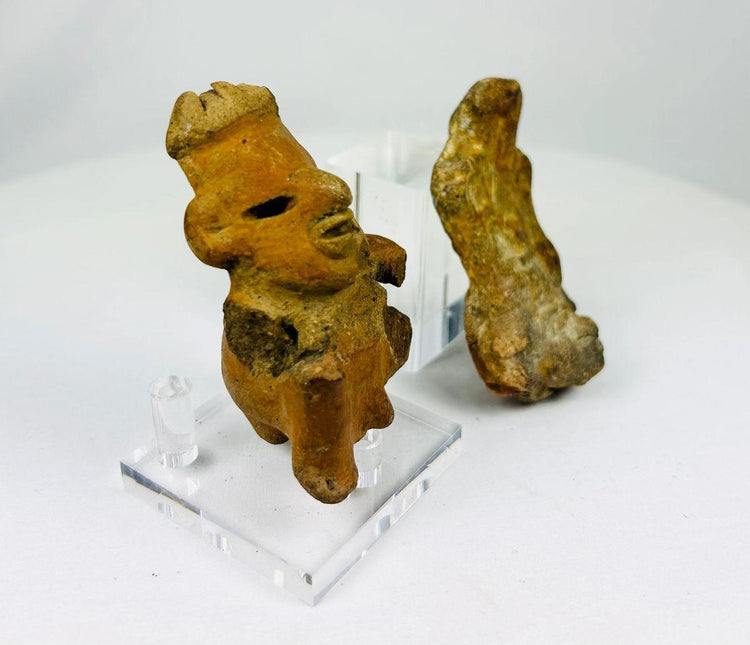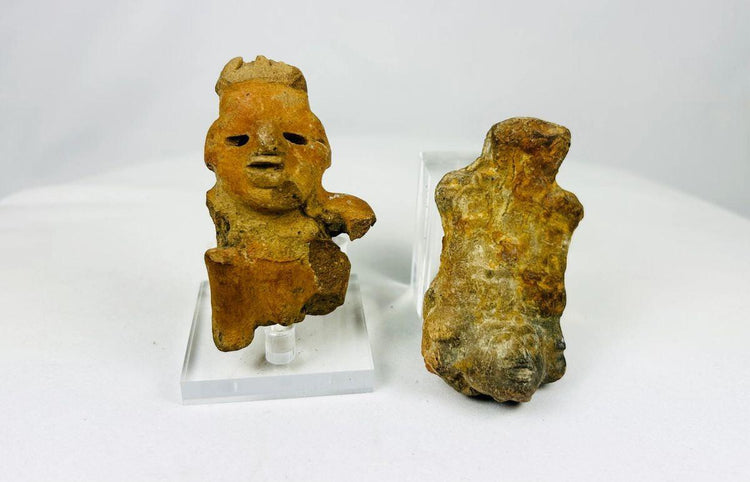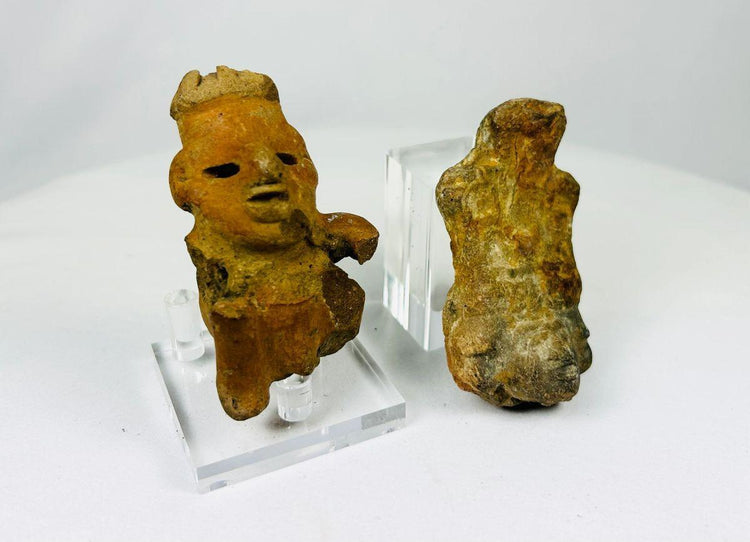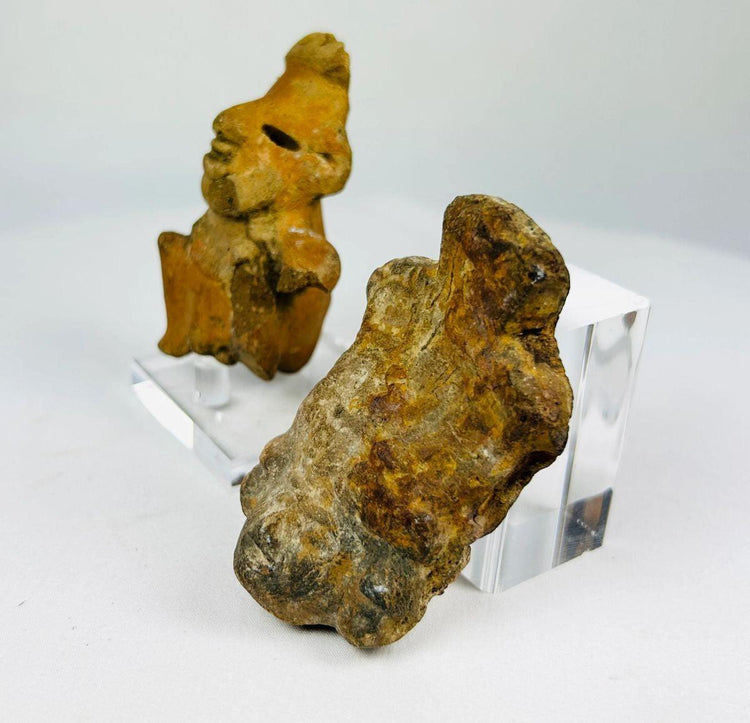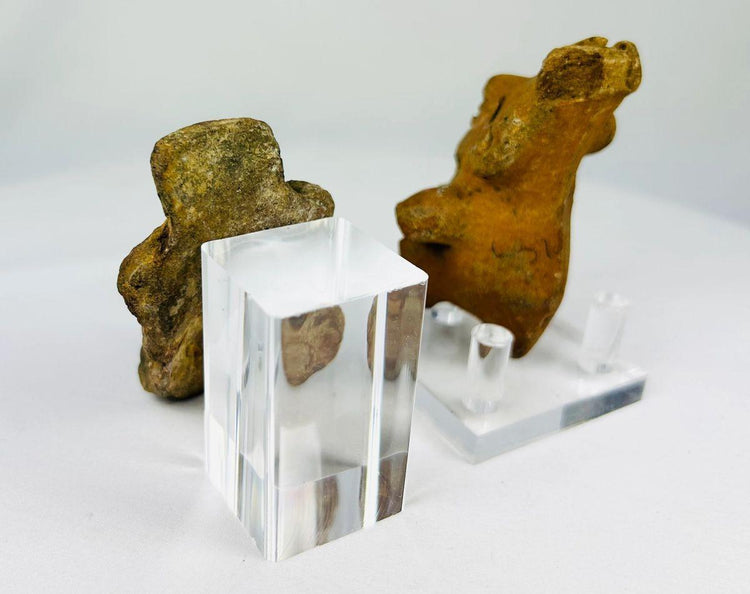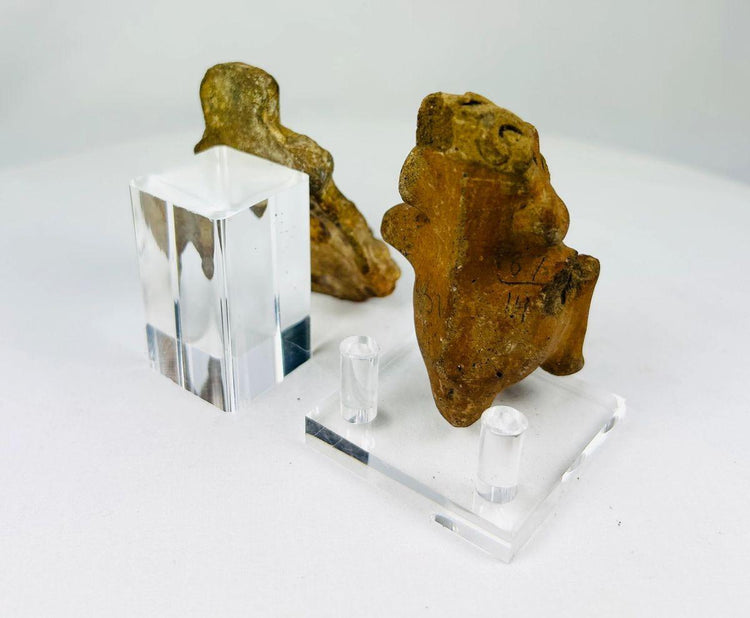Ancient | Mexican Pottery Figures | Jalisco & Nayarit | Circa 200 BCE
Description
More
Less
Historical Context & Origin
Region: Western Mexico
Material: Terracotta clay
Period: Late Preclassic to Early Classic Period, circa 200 BCE – 300 CE
Description
This listing presents a pair of fragmentary Pre-Columbian pottery figures from the shaft tomb cultures of Western Mexico. The first, executed in the classic Jalisco style, features a broad face with almond-shaped eyes, a swept-back coiffure, and remnants of the upper torso and one arm. The second, attributed to Nayarit traditions, consists of a torso fragment marked by soft anatomical definition, subtle breast modeling, and heavy mineral encrustation from centuries of burial. Both display warm earthen hues and natural calcification, indicative of long-term interment. Originally part of larger composite effigies, these figures would have served a ritual or funerary role within ancient tomb complexes.
Features
- Hand-molded and detailed by ancient artisans
- Distinct Jalisco facial characteristics and coiffure
- Nayarit torso with robust curvature and encrustation
- Deep burial patina and mineral accretions
Cultural Significance
Such figures were central to the ritual practices of shaft tomb cultures in Western Mexico. They were often placed in tombs as offerings, symbolizing ancestors, deities, or ceremonial participants meant to accompany the deceased into the afterlife. These figurines provide valuable anthropological insight into ancient social structures, aesthetics, and funerary traditions.
Condition
Both figures are fragmentary yet stable. The Jalisco-style piece retains the head, partial torso, and arm with light abrasion and soil residue. The Nayarit-style torso is more heavily encrusted, with softened detail from burial conditions. No evidence of modern restoration.
Dimensions (approximate)
Jalisco Figure Height: 3.5 in
Nayarit Torso Height: 3 in
Age
Estimated 1,700–2,200 years old
Description
Historical Context & Origin
Region: Western Mexico
Material: Terracotta clay
Period: Late Preclassic to Early Classic Period, circa 200 BCE – 300 CE
Description
This listing presents a pair of fragmentary Pre-Columbian pottery figures from the shaft tomb cultures of Western Mexico. The first, executed in the classic Jalisco style, features a broad face with almond-shaped eyes, a swept-back coiffure, and remnants of the upper torso and one arm. The second, attributed to Nayarit traditions, consists of a torso fragment marked by soft anatomical definition, subtle breast modeling, and heavy mineral encrustation from centuries of burial. Both display warm earthen hues and natural calcification, indicative of long-term interment. Originally part of larger composite effigies, these figures would have served a ritual or funerary role within ancient tomb complexes.
Features
- Hand-molded and detailed by ancient artisans
- Distinct Jalisco facial characteristics and coiffure
- Nayarit torso with robust curvature and encrustation
- Deep burial patina and mineral accretions
Cultural Significance
Such figures were central to the ritual practices of shaft tomb cultures in Western Mexico. They were often placed in tombs as offerings, symbolizing ancestors, deities, or ceremonial participants meant to accompany the deceased into the afterlife. These figurines provide valuable anthropological insight into ancient social structures, aesthetics, and funerary traditions.
Condition
Both figures are fragmentary yet stable. The Jalisco-style piece retains the head, partial torso, and arm with light abrasion and soil residue. The Nayarit-style torso is more heavily encrusted, with softened detail from burial conditions. No evidence of modern restoration.
Dimensions (approximate)
Jalisco Figure Height: 3.5 in
Nayarit Torso Height: 3 in
Age
Estimated 1,700–2,200 years old
You May Also Like






















